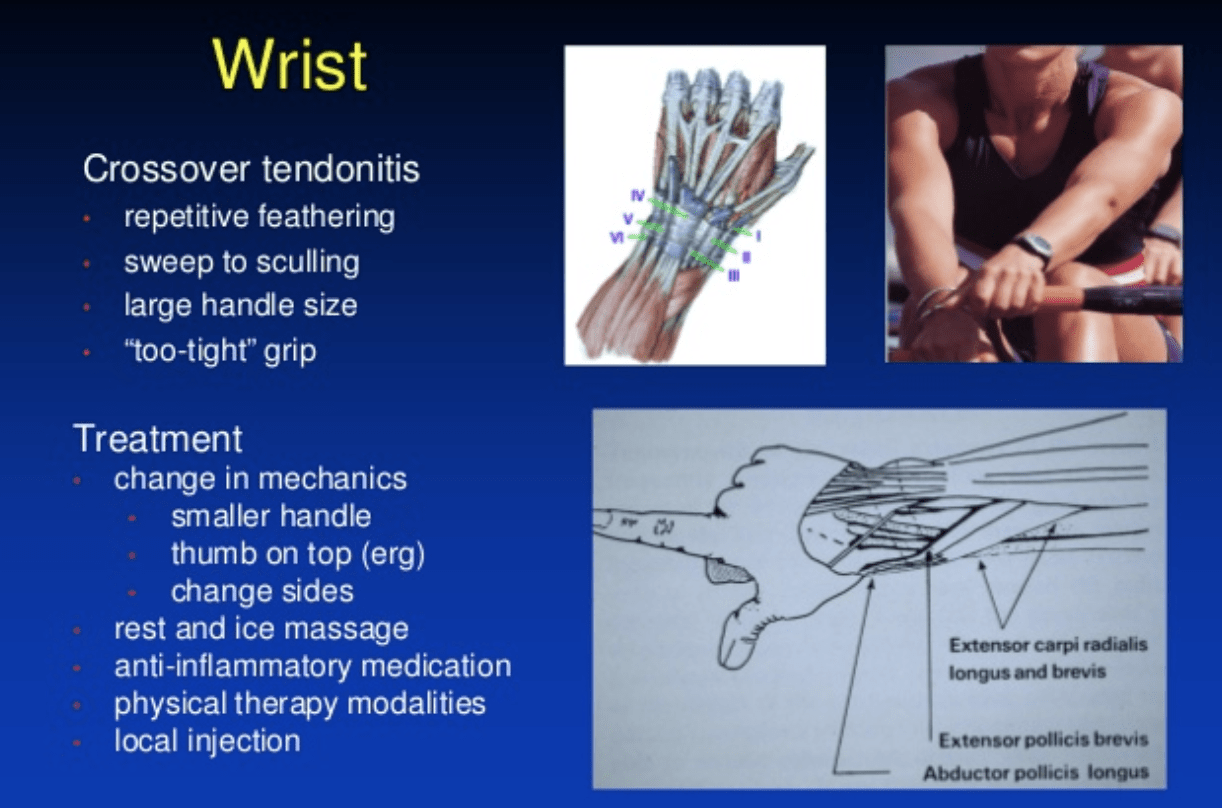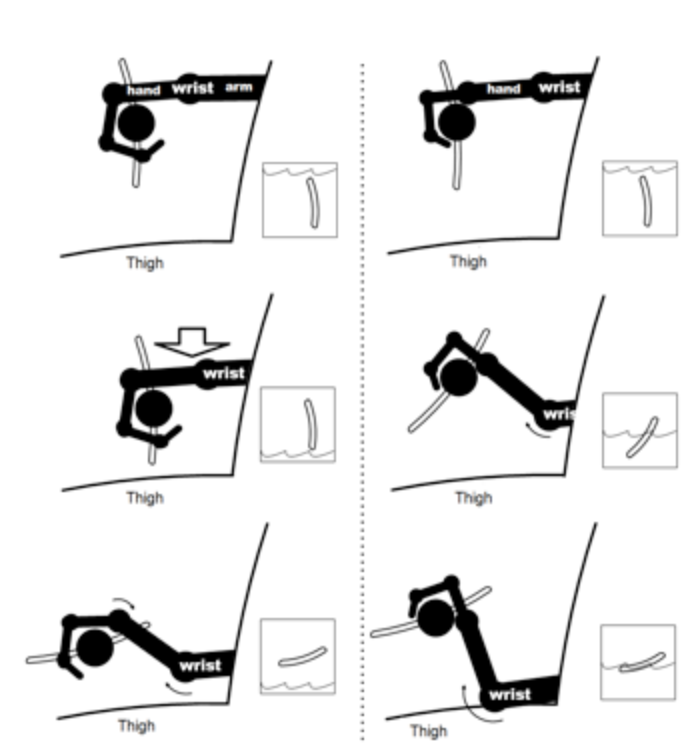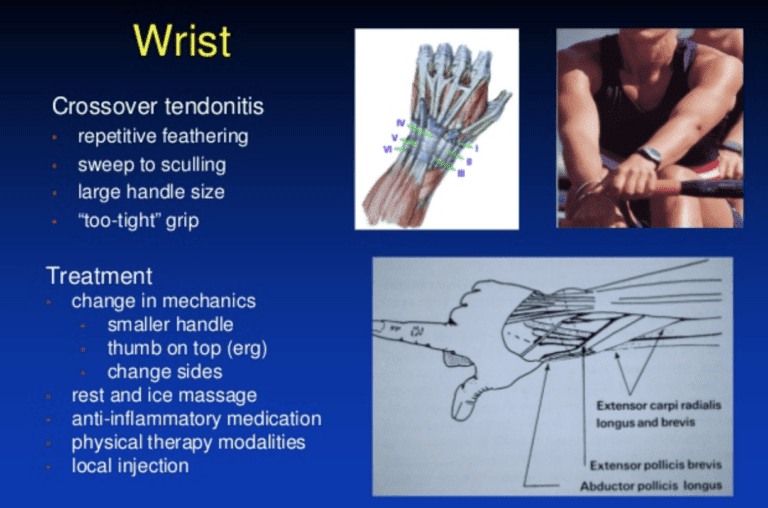Getting injured sucks and more importantly, most rowing injuries are “over-use” types. Which means they develop slowly over time and are hard to overcome because when you come back to training, the possibility of recurrence is high.
Rules for Rowing Injuries
- Always get treatment FAST
- Rest and ice is not treatment (until after you do step 4)
- A Family Doctor is NOT your best advisor
- Go to a sports injury specialist
- Be diligent with your rehab
- If you are a coach – integrate your injured athlete into the group training so they don’t feel they are missing out
Causes of wrist injuries in rowing and sculling
I found this US Rowing slide deck by Anthony Fanning and this is the advice on wrist injuries.
Causes are mainly repetitive feathering (are you feathering correctly – see our advice page for sculling and sweep feathering)
Also athletes switching disciplines from sweep to sculling and back again, oar handles being too large for your hand size and holding onto the handle tightly.
How should you hold the oar handle?
One lovely phrase to describe the sculling grip is “Hold the scull as you would a little bird, tight enough to stop it escaping but loose enough to avoid hurting it.” I first heard this used by Tony O’Connor of Ireland and Christ’s College, New Zealand and I believe it came from Adrian Henning.
Here is Duncan Holland’s description of correct rowing grip
Sculling – the handle is loosely held with the fingers wrapped around so that the second knuckles are in front. The thumbs are underneath and the handle is held so that there is space between the webbing of the thumb and the handle. Both wrists are flat.
In rowing the outside hand has a static grip. The wrist stays flat, the fingers stay still. In effect the grip is a hook, and the handle is free to rotate in this hook when the blade is free of the water and there is no pressure being applied. Hand separation is to some extent personal and what is comfortable
Curing a wrist injury is largely down to dealing with the inflammation and pain and then teaching the athlete to change their technique. Slow rowing (on the erg or water) with careful attention to technique. You may find using a Wraptor Balance on a single or double / pair helps stability while the athlete re-learns their movement patterns.


Teaching correct feathering
Take a look at this image which Bert Hoefsloot sent us (link to his article below in the resources). The right side is what he commonly sees in the boat – the left side is considered “correct” technique to feather an oar.


In the diagram the little square indicates the position of the blade spoon relative to the water which corresponds with each hand/wrist position. Top – is the drive phase; middle is the oar extraction from the water and the bottom is the feathering action.
Resources from Rowperfect on Feathering
- Jimmy Joy’s test of the double-hand feather in sweep rowing
- Bert Hoefsloot wrote this coaching advice to help teach the extraction of the rowing or sculling blade.
- Marlene Royle’s Dock Talk video on feathering in the sculling boat
- Drills for improving bladework e-book
- Listen to RowingChat podcast on rowing injuries with Dr Andy Franklyn-Miller







